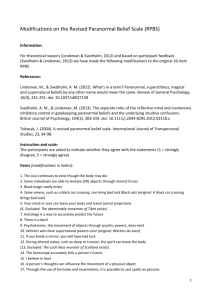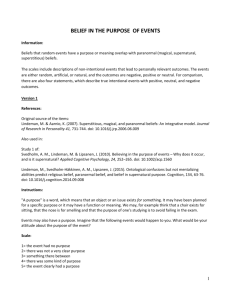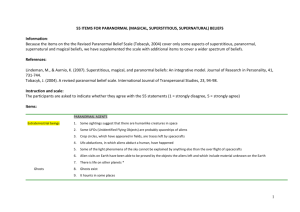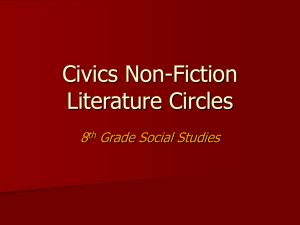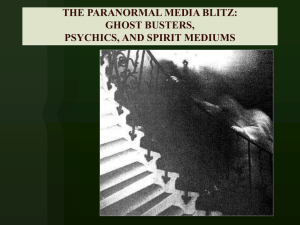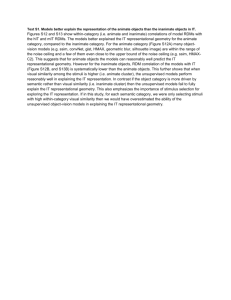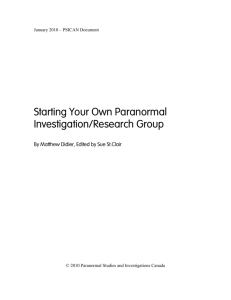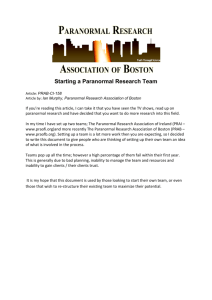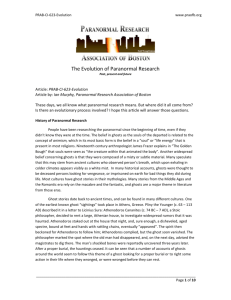SCALE: CORE KNOWLEDGE VIOLATIONS
advertisement
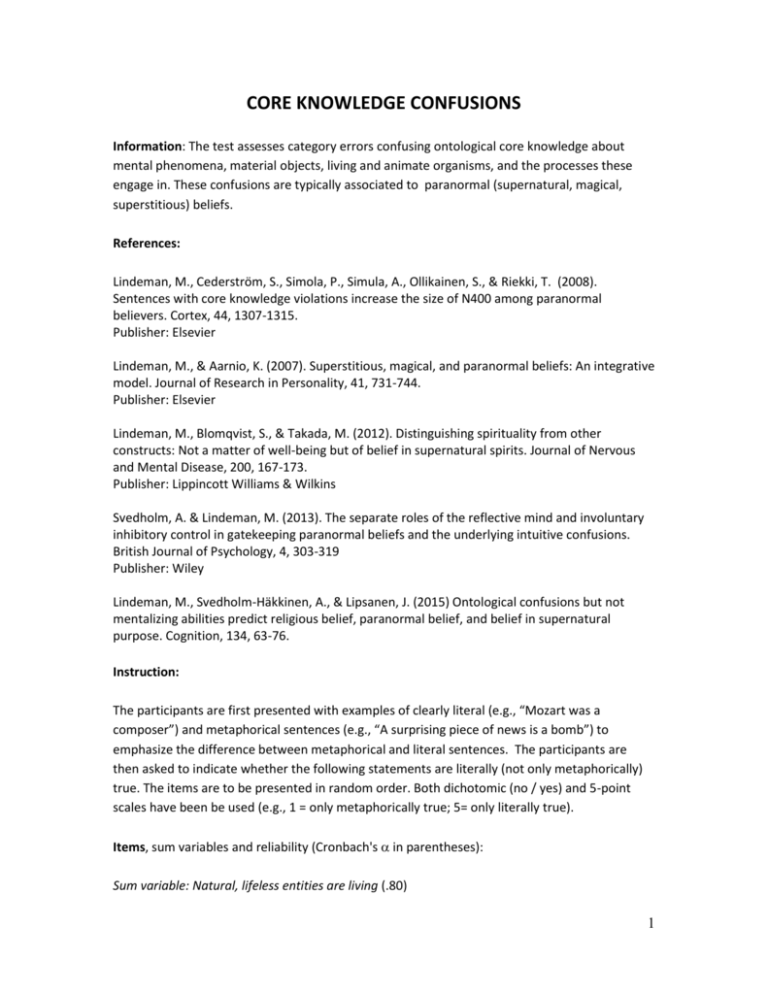
CORE KNOWLEDGE CONFUSIONS Information: The test assesses category errors confusing ontological core knowledge about mental phenomena, material objects, living and animate organisms, and the processes these engage in. These confusions are typically associated to paranormal (supernatural, magical, superstitious) beliefs. References: Lindeman, M., Cederström, S., Simola, P., Simula, A., Ollikainen, S., & Riekki, T. (2008). Sentences with core knowledge violations increase the size of N400 among paranormal believers. Cortex, 44, 1307-1315. Publisher: Elsevier Lindeman, M., & Aarnio, K. (2007). Superstitious, magical, and paranormal beliefs: An integrative model. Journal of Research in Personality, 41, 731-744. Publisher: Elsevier Lindeman, M., Blomqvist, S., & Takada, M. (2012). Distinguishing spirituality from other constructs: Not a matter of well-being but of belief in supernatural spirits. Journal of Nervous and Mental Disease, 200, 167-173. Publisher: Lippincott Williams & Wilkins Svedholm, A. & Lindeman, M. (2013). The separate roles of the reflective mind and involuntary inhibitory control in gatekeeping paranormal beliefs and the underlying intuitive confusions. British Journal of Psychology, 4, 303-319 Publisher: Wiley Lindeman, M., Svedholm-Häkkinen, A., & Lipsanen, J. (2015) Ontological confusions but not mentalizing abilities predict religious belief, paranormal belief, and belief in supernatural purpose. Cognition, 134, 63-76. Instruction: The participants are first presented with examples of clearly literal (e.g., “Mozart was a composer”) and metaphorical sentences (e.g., “A surprising piece of news is a bomb”) to emphasize the difference between metaphorical and literal sentences. The participants are then asked to indicate whether the following statements are literally (not only metaphorically) true. The items are to be presented in random order. Both dichotomic (no / yes) and 5-point scales have been be used (e.g., 1 = only metaphorically true; 5= only literally true). Items, sum variables and reliability (Cronbach's in parentheses): Sum variable: Natural, lifeless entities are living (.80) 1 Items: Stars live in the sky Stones live in the forest Rock lives long Water lives in the nature Moon lives at night Force has the attributes of an animate organism (.80) Items Force lives in the universe Force senses a human Force wants to move Force aims to influence Force knows its direction Lifeless entities have the attributes of animate organisms (.68) Items: Sun can see a long way Moon aims to move forward Stones sense the cold Planets know things Earth wants water The sky hears the thunder. Inanimate organisms have the attributes of animate organisms (.75) Items: Trees aim to move upwards Trees sense the wind Flowers want light Flowers feel the cold in the fall Plants know the seasons Artificial entities have the attributes of animate organisms (.85) Items: Home knows its residents Furniture wants a home 2 House senses its environment House knows its history Mental states have the attributes of a physical object (.72) Items: Grief moves in the stomach Mind touches the other Thought grows by concentrating Mind breaks when it is ill A plan lives in the nature Fear poisons man Fillers: Metaphors (.71) Items: Good memory is a mine Howling wind is a flute Distressed person in a prisoner Sudden fear is a grasping hand Literally true statements (.89) Items: Flowers grow in the summer Rainless weather is dry Bad drawing is a scribble Flowing water is liquid 3
